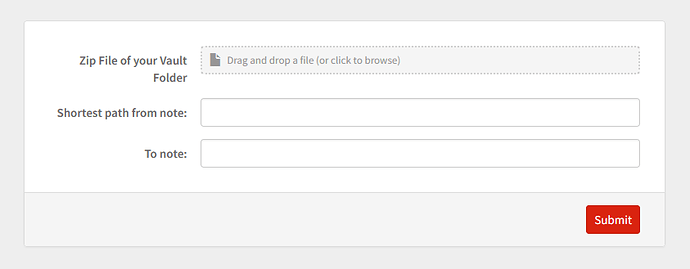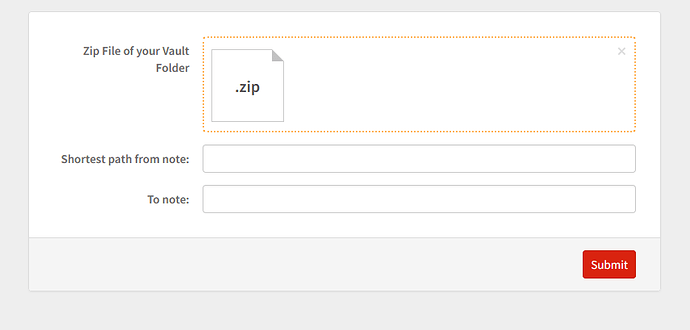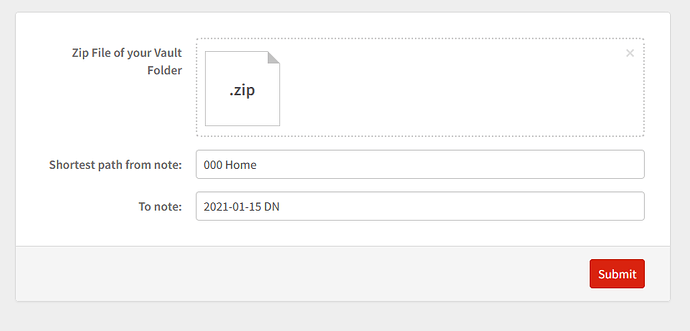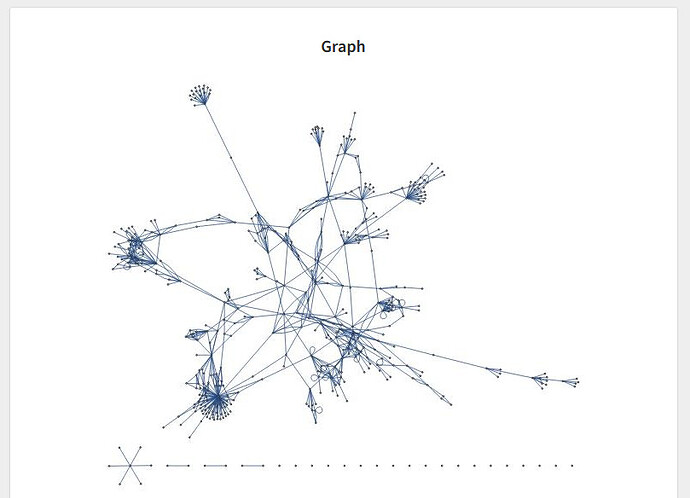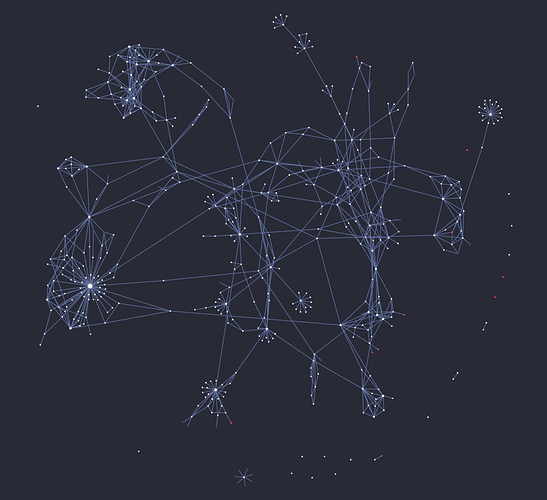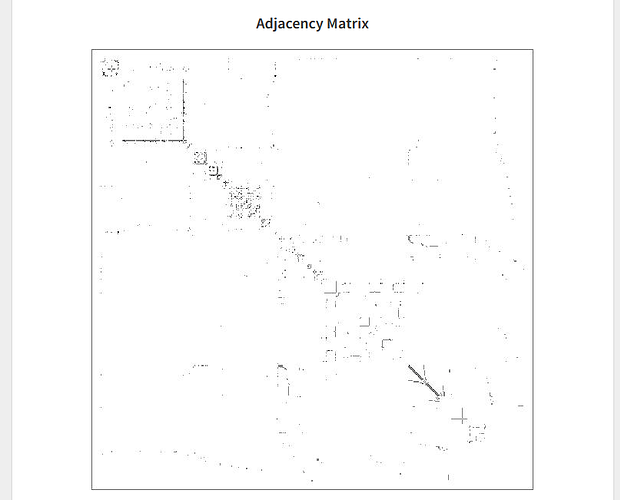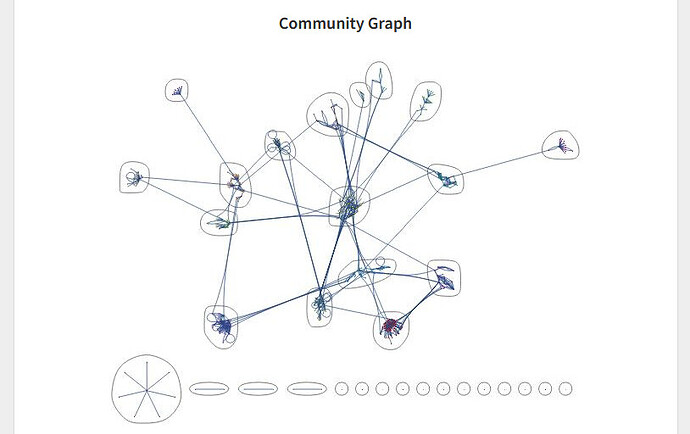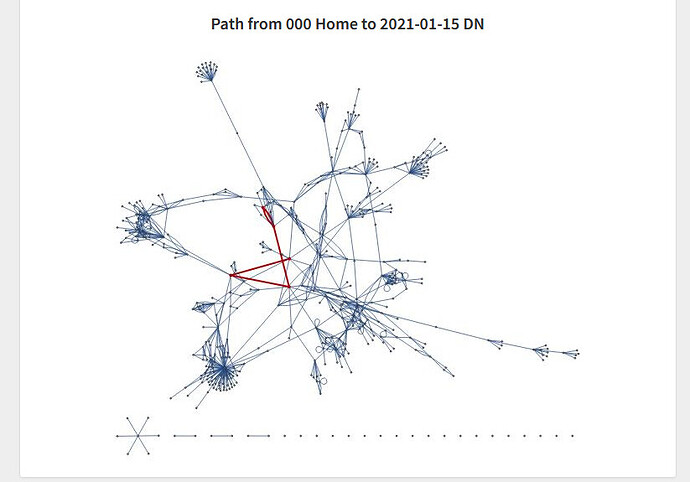Edit 1: this tool seems to work for some, but not for others. I’ll keep working on it to figure it out 
Edit 2: I’ve redone alot of the code, so it should work more smoothly now. I don’t think diacritics should be a problem anymore.
I have recently been playing around with Mathematica, a programming language created by Stephen Wolfram. It has many builtin functions to analyse graphs, so I thought it would be cool to have my Obsidian graph in Mathematica.
I have created a small web app where users can upload a .zip file of their vault’s root folder, and get some insight into their knowledge base!
By following this link Wolfram App (you may need to create a free account), you will be taken to the app. You will see a screen like this:
In it, you can upload the zip file of your vault first. If you’re not sure how to zip a folder, simply right click on your vault folder, click send to, and then click compressed (zipped) folder. This will create a copy of your vault, and zip it.
Optionally, you can also ask for the shortest path between two notes! In this example, I am highlighting to shortest path between my 000 Home note, and my current daily note 2021-01-15 DN. Just enter them as plaintext, no quotes or anything.
Now you can click submit. The computation may take a few moments, especially for larger vaults. The results for this example are:
My recreated graph view:
As compared to my actual graph view:
An adjacency matrix of your graph. Think of this as a fingerprint of your vault.
A community graph, in which Mathematica’s algorithms find clusters in your graph
And the part I like the most, the shortest path between any two connected notes!
Play around with it, and please feel free to share your results! I am also open to suggestion for features which I might integrate when I have time. Thank you for taking the time to read this 
